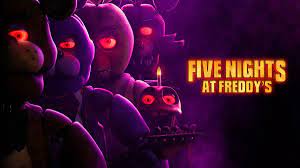Cineview: Not All Antagonists Are Created Equally
What Makes An Effective Villain?

The villain is always the most memorable part of any film which includes one. When one thinks of classics such as Alien or Star Wars, they are to likely to think of the Xenomorph and the Sith Lord, Darth Vader respectively, even though Darth Vader only appears in twelve minutes of the original movie, and the titular alien has a mere four minutes of screen time. Yet there is something compelling enough about these characters from the late 70’s that they are still pop culture icons today.
In the cases of Darth Vader and the Xenomorph, it can be chalked to intriguing design. They fall into the category of villains which are visually appealing, but typically flat in other areas of character development. Because of their interesting appearances, directors are able to show the character in small doses without leaving the audience feeling cheated. It is actually very important that the villain is not shown often, as overexposure can kill the effect it once held.
The majority of great villains have more going for them of course. Motivation and backstory tend to play heavily into how the audience perceives the villain. Motivation is the most difficult aspect to perfect. In reality, it is accepted that certain individuals suffer from mental illness, which causes them to engage in activities one without an illness likely would not.
In film, however, attributing a character’s actions to insanity is considered cliche. Here is where backstory and motivation intertwine and become one. A great villain should have a tragic backstory which explains their actions which may seem random without knowledge of the aforementioned motive. Too often, the backstory is sufficient in explaining why the villain is such a hateful person, but not to the extent the film has shown.
General audiences are more interested in blockbusters with groundbreaking visual effects instead of smaller stories focusing on a conflict with more personal stakes than the end of the world. The film ends up with a poor villain who falls into the worst possible category of villains. One who is simply “pure evil”.
The most famous example of a villain who has literally no motivation but to be evil is Jason Vorhees of Friday the 13th. Throughout the franchise he murders teens in increasingly creative ways. Not once do the filmmakers ever bother to explain why he loves killing so much.
Studying a few films with great villains and a few with atrocious (pun not intended) villains reveals the key components to a great villain are appropriate ambitions, visually interesting design, and a reasonable motive. Even without these things, a film can be made well, and vice versa. While a villain is an important piece in the puzzle that is making a movie, it does not stop audiences for enjoying movies for other aspects which, if done well or poorly enough, can distract from the villain, resulting in a great campy movie to make fun of with friends, or an interesting character study of the protagonist.











